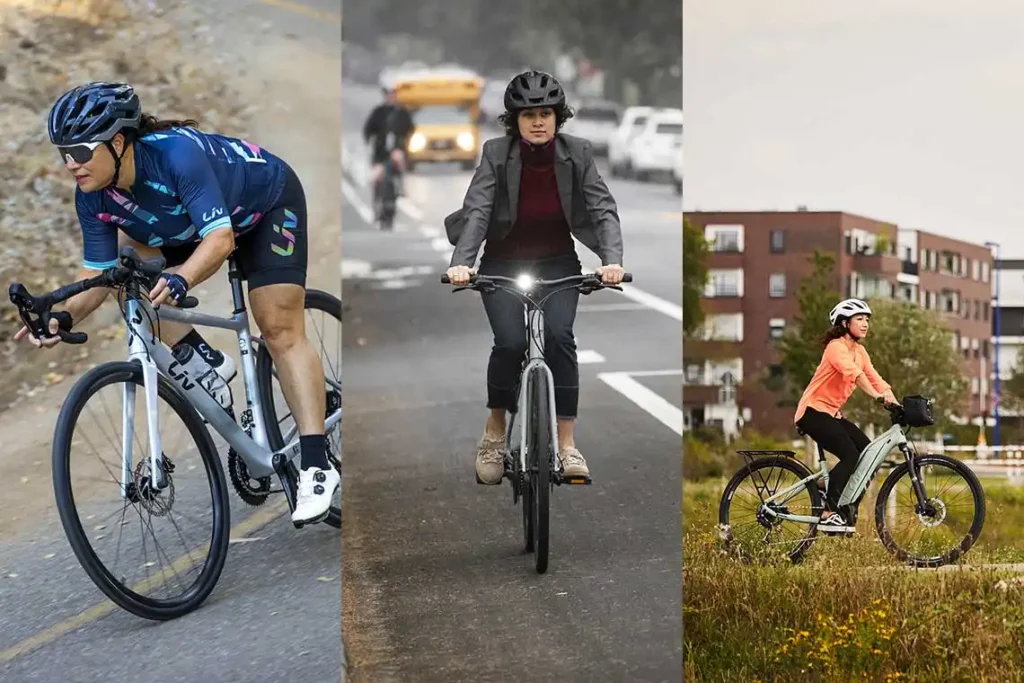Whether you’re new to cycling or looking to invest in your first bike, choosing the right one can feel overwhelming. With so many options on the market, it’s important to understand the key factors that will affect your cycling experience, comfort, and performance. From road bikes to mountain bikes, hybrid bikes to electric bikes, the right bike for you depends on your needs, goals, and riding environment.
In this guide, we’ll walk you through the essential factors to consider when choosing the perfect bike for beginners, helping you make an informed decision that ensures your first ride is enjoyable and stress-free.
1. Identify Your Riding Style and Needs
The first step in selecting the perfect bike is to understand your riding style and where you’ll be cycling most frequently. Different bikes are designed for different purposes, so choosing the right type will make all the difference in your riding experience.
Types of Bikes to Consider:
-
Road Bikes: These are lightweight bikes designed for fast-paced, smooth rides on paved roads. They typically have narrow tires and drop handlebars for a more aerodynamic position. If you plan on riding on the road and want to build speed, a road bike is an excellent option.
-
Mountain Bikes: If you plan to ride on rough terrain, trails, or off-road paths, a mountain bike is the way to go. These bikes are built to handle rugged landscapes with wider tires, suspension, and a more upright riding position.
-
Hybrid Bikes: A hybrid bike is a versatile option that combines elements of both road and mountain bikes. With a comfortable upright position, wider tires, and a mix of performance features, hybrid bikes are great for casual riders who want to ride on both paved roads and light trails.
-
Cruiser Bikes: Designed for relaxed, leisurely rides, cruiser bikes are ideal for flat terrain and short distances. They feature wide tires and comfortable seating, making them great for beginners who want a comfortable, easy ride.
-
Electric Bikes (eBikes): If you’re looking for extra assistance when pedaling, electric bikes are a popular option. These bikes have a small motor that provides a boost, making it easier to tackle hills or longer distances without as much effort.
2. Consider Your Budget
Bikes come in a wide range of prices, and it’s important to set a budget that aligns with your needs. While you don’t have to break the bank for a quality bike, investing in a bike that fits your needs and will last is essential.
What to Consider:
-
Entry-Level Bikes: Beginner bikes typically range from $300 to $600. These bikes offer good value for casual riders and provide basic features that are ideal for short commutes or weekend rides.
-
Mid-Range Bikes: In the $600 to $1,000 range, you’ll find bikes with higher-quality components, better materials, and more specialized features. These are ideal for those who want to ride more regularly or tackle slightly more challenging terrain.
-
High-End Bikes: High-end bikes often cost $1,000 and up, offering lightweight frames, advanced gearing systems, and top-notch components. These bikes are ideal for serious cyclists or those planning to ride long distances and in more varied conditions.
Keep in mind that there may be additional costs for accessories such as helmets, locks, lights, and maintenance, so it’s important to factor these into your budget as well.
3. Get the Right Fit
One of the most crucial aspects of choosing a bike is making sure it fits you properly. A bike that is too large or too small can lead to discomfort, poor handling, and even injury over time. When you’re trying out a bike, make sure you’re comfortable in the saddle and that you can easily reach the handlebars and pedals.
Key Fit Considerations:
-
Frame Size: The frame size is one of the most important aspects of bike fit. Most bike brands offer a size chart based on your height and inseam measurement, so be sure to check that when choosing a bike.
-
Seat Height: When seated, your legs should have a slight bend when your foot is at the bottom of the pedal stroke. If your seat is too low, it will cause discomfort and strain; if it’s too high, you won’t have enough control.
-
Handlebar Position: The height and reach of the handlebars affect your comfort, especially during long rides. If you’re riding for leisure or commuting, look for handlebars that allow you to maintain a comfortable upright position.
-
Reach: This is the distance from the saddle to the handlebars. If you’re stretched out too far or too close, it can make the ride uncomfortable. A proper reach allows you to maintain a natural and relaxed posture.
4. Think About Bike Features
Once you’ve decided on the type of bike and fit, you’ll want to consider additional features that can enhance your cycling experience. Depending on your needs and preferences, certain features might make your bike more comfortable or convenient.
Features to Consider:
-
Gearing System: If you’re planning to ride in hilly areas, a bike with a wide range of gears will make it easier to climb. Road bikes often have more gears for fast rides on flat terrain, while mountain bikes may have simpler gears suited for off-road conditions.
-
Suspension: Suspension helps absorb shock from rough surfaces, providing a smoother ride. Mountain bikes typically have full suspension (front and rear), while road bikes usually have no suspension to keep them light and fast.
-
Tires: The type of tires you choose depends on where you’ll be riding. Road bikes usually have narrower tires for speed, while mountain bikes have wider tires with more tread for grip on rough terrain. Hybrid bikes feature a middle ground.
-
Brakes: There are two main types of brakes: rim brakes and disc brakes. Rim brakes are common on entry-level bikes and are lightweight and affordable, while disc brakes offer more stopping power, especially in wet conditions, making them a better choice for mountain bikes and high-performance bikes.
-
Storage and Accessories: If you plan on using your bike for commuting or running errands, look for features like racks, baskets, or fenders. Accessories like lights, water bottle holders, and a comfortable saddle can also improve your overall experience.
5. Test Ride Before You Buy
Before making a final decision, it’s always a good idea to take the bike for a test ride. Testing out the bike will give you a sense of how it handles, how comfortable it feels, and whether it suits your riding style.
What to Check During the Test Ride:
-
Comfort: Pay attention to how the bike feels in terms of seat comfort, handlebar positioning, and overall stability.
-
Handling: Ensure the bike steers easily and feels responsive when turning.
-
Brakes and Gears: Check that the gears shift smoothly and that the brakes work efficiently.
Final Thoughts
Choosing the right bike as a beginner doesn’t have to be complicated. By understanding the types of bikes available, considering your budget, ensuring the right fit, and selecting the features that align with your needs, you’ll be on your way to enjoying many enjoyable and safe rides.
Take your time, do your research, and test out different models until you find the bike that feels just right for you. Cycling is not only a great way to stay fit, but it’s also an eco-friendly mode of transportation that opens up a world of exploration. Happy cycling!

